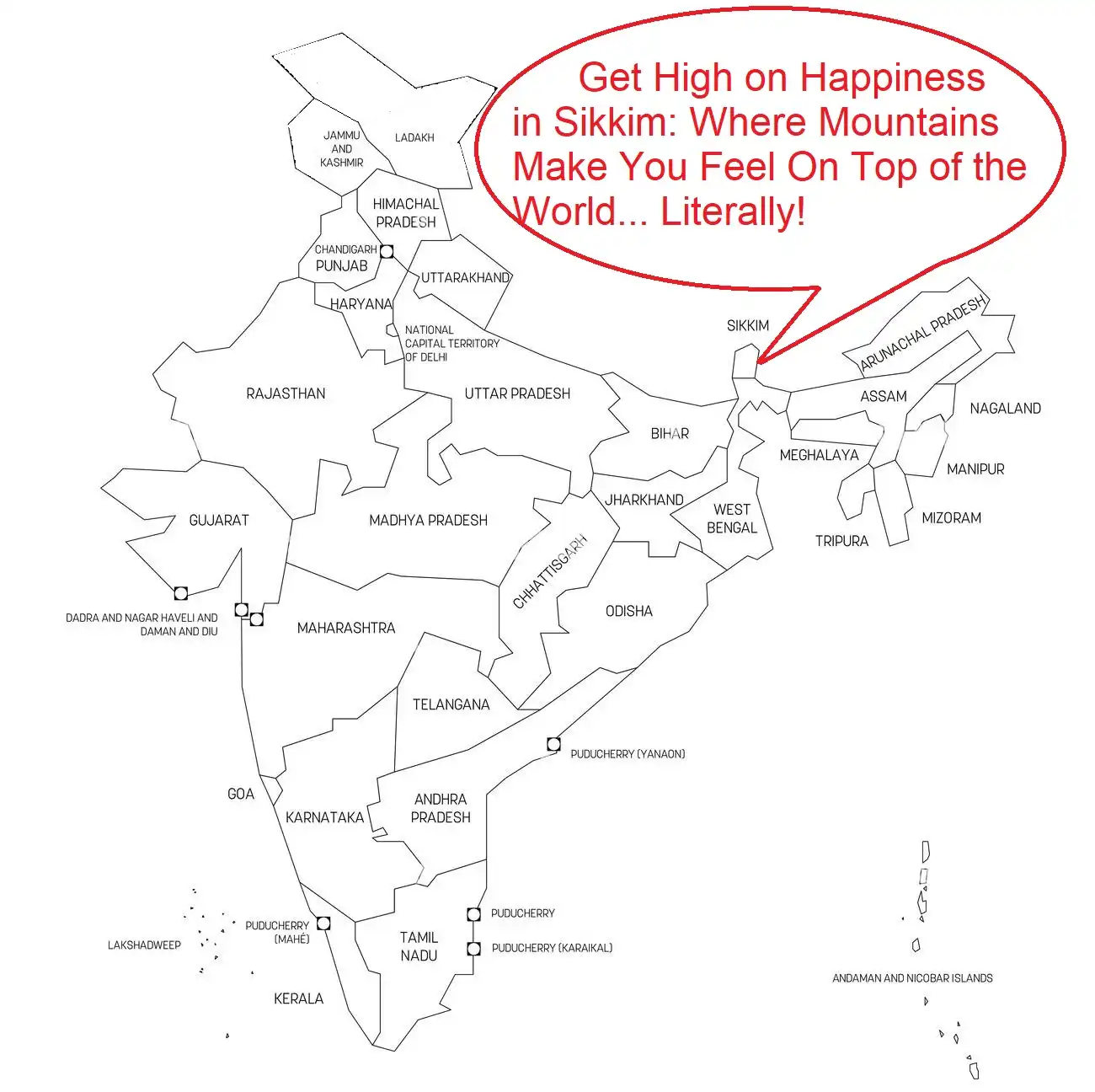1. Introduction to Sikkim
Sikkim, the least populous and second smallest among the Indian states, is renowned for its untouched beauty and rich cultural heritage. It shares borders with Bhutan, Tibet, and Nepal, making it a melting pot of Himalayan cultures. Sikkim's commitment to environmental conservation is evident in its lush landscapes, organic farming practices, and the ban on plastic bags. Whether you're an adrenaline junkie, a spiritual seeker, or someone looking to unwind amidst nature, Sikkim's diverse offerings promise a memorable retreat.
2. Top Places to Visit in Sikkim and Their Best Time to Visit
Best Time to Visit: March to June, October to December
Gangtok, the capital city, is a vibrant blend of modernity and tradition. Key attractions include the Enchey Monastery, Rumtek Monastery, and the panoramic Tashi View Point. The spring and autumn months offer clear skies and pleasant weather, perfect for exploring the city and enjoying the views of the majestic Kanchenjunga.
Best Time to Visit: September to May
Pelling is known for its breathtaking views of the Kanchenjunga and its proximity to ancient monasteries like Pemayangtse. The post-monsoon and winter seasons are ideal for trekking, bird watching, and exploring the rich cultural heritage of the area.
Best Time to Visit: March to May, October to December
Tsomgo Lake, also known as Changu Lake, is a glacial lake located at an altitude of 12,400 feet. The journey to the lake offers stunning Himalayan landscapes. The spring and autumn months are the best times to visit, when the weather is clear and the lake is either frozen or reflecting the surrounding peaks.
Best Time to Visit: March to June, September to November
Yuksom, the gateway to Mount Khangchendzonga, is a historic town with a serene environment, ideal for trekkers and nature lovers. The pleasant climate in spring and autumn makes it perfect for trekking and exploring the nearby Kanchenjunga National Park.
Best Time to Visit: October to June
Lachung, a picturesque mountain village, serves as the base for exploring the Yumthang Valley, known as the Valley of Flowers. The winter months are magical, with snow-covered landscapes, while spring brings a riot of colors with blooming rhododendrons.
Best Time to Visit: August to September, March to May
Zuluk, located on the historic Silk Route, offers spectacular views of the Eastern Himalayas. The best time to visit is during late summer and spring when the weather is pleasant, and the region is adorned with wildflowers.
Best Time to Visit: October to March
Namchi is famous for the Siddhesvara Dham and the Samdruptse Hill, featuring a giant statue of Guru Padmasambhava. The winter months provide a clear view of the Himalayan ranges and comfortable weather for sightseeing.
3. FAQs
Q: How can I reach Sikkim?
A: The nearest airport is Pakyong Airport near Gangtok. Alternatively, Bagdogra Airport in West Bengal is well-connected to major Indian cities, with road transport available to Sikkim. New Jalpaiguri (NJP) is the nearest major railway station.
Q: What is the cuisine of Sikkim like?
A: Sikkimese cuisine is a blend of Tibetan, Nepalese, and Indian influences. Dishes like momos, thukpa, and the fermented foods gundruk and sinki are local favorites. Don't miss trying the traditional millet beer, chaang.
Q: What should I pack for my trip to Sikkim?
A: Layered clothing is essential, as temperatures can vary. Warm clothes, waterproof jackets, and comfortable trekking shoes are recommended. Also, carry sunscreen, sunglasses, and lip balm for protection against the sun and cold.
4. Online Resources for Planning Your Trip
- Sikkim Tourism Official Website: Provides comprehensive information on tourist attractions, accommodations, and travel advisories.
- Travel Blogs and Forums: Offer insights and recommendations from travelers who have explored Sikkim.
- Online Travel Agencies (OTAs): Useful for booking accommodations, flights, and planning itineraries.
5. Conclusion
Sikkim is a haven of natural beauty and spiritual tranquility, offering a journey through mystical monasteries, verdant valleys, and majestic mountains. Visiting the destinations mentioned above during their ideal times will enhance your experience, allowing you to immerse fully in the serenity and splendor of this Himalayan paradise. Whether you're marveling at the ethereal beauty of Tsomgo Lake, trekking through the vibrant Yumthang Valley, or soaking in the spiritual vibes of Gangtok, Sikkim promises an adventure that will resonate with your soul. Embark on a journey to Sikkim, where every path leads to discovery, and every moment is a step closer to nature's heart.

